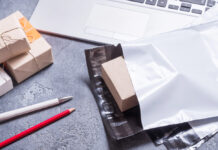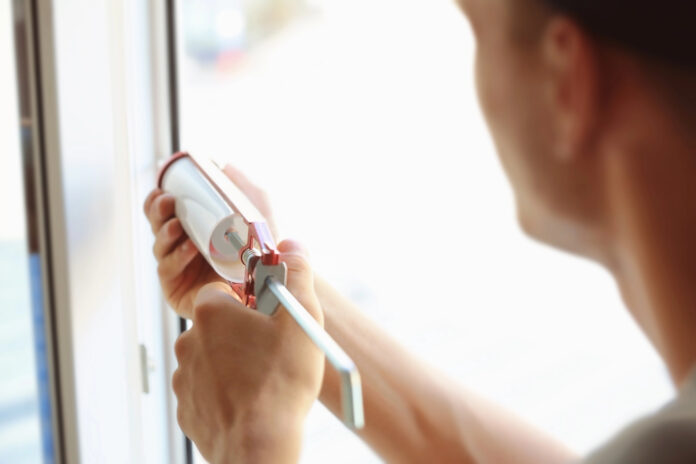In industries where high temperatures are the norm—such as electronics, aerospace, automotive, and LED lighting—thermal adhesives have become essential for reliable and efficient performance. These adhesives are specially formulated to provide both mechanical bonding and thermal conductivity, helping dissipate heat from sensitive components and ensure longevity.
However, not all thermal adhesives are created equal, and using them improperly can result in overheating, component failure, or costly repairs. To avoid these pitfalls, it’s crucial to follow best practices tailored to high-heat applications. This article outlines key considerations and practical tips to help engineers and manufacturers get the most out of thermal adhesives.
1. Understand the Application Environment
The first step in selecting and using thermal adhesives effectively is understanding the specific requirements of your application. Ask the following questions:
- What is the maximum operating temperature?
- Will the adhesive be exposed to thermal cycling?
- Are there vibrations or mechanical stresses involved?
- What are the bonding surfaces made of (e.g., metals, plastics, ceramics)?
Knowing the thermal and mechanical environment ensures you select an adhesive that can handle the temperature range without degrading or losing adhesion.
2. Choose the Right Thermal Adhesive Type
Thermal adhesives come in various forms, each with advantages and limitations. Common types include:
-
One-Part Epoxies:
Pre-mixed and heat-curable, these offer strong bonds and excellent thermal conductivity, making them suitable for permanent applications.
-
Two-Part Epoxies:
These require mixing before application and are often used in more flexible production settings. They provide strong adhesion and excellent resistance to thermal shock.
-
Silicone-Based Adhesives:
Known for their flexibility and high-temperature resistance, these are ideal for applications with frequent thermal cycling.
-
Acrylic-Based Adhesives:
These offer quick cure times and good mechanical properties, but may not perform well in extreme heat compared to epoxies or silicones.
Choose an adhesive with a thermal conductivity rating that matches your heat dissipation needs, typically measured in W/mK (watts per meter-kelvin). Higher values are better for high-heat applications.
3. Surface Preparation is Critical
No matter how advanced your adhesive is, poor surface preparation can lead to failure. To maximize bond strength:
- Clean surfaces thoroughly using isopropyl alcohol or a suitable degreaser to remove oils, dust, and contaminants.
- Roughen smooth surfaces slightly (e.g., with fine sandpaper) to enhance mechanical adhesion.
- Ensure both surfaces are completely dry before application.
Proper surface prep ensures that the adhesive makes full contact and cures evenly.
4. Control the Application Thickness
For thermal adhesives, the bond line thickness directly affects thermal performance. A thinner, uniform layer improves thermal conductivity and reduces thermal resistance. However, too thin a layer might not provide adequate mechanical bonding.
Use tools like precision dispensers, stencils, or controlled spreaders to apply a consistent adhesive thickness—usually in the range of 50–150 microns for most electronics applications. Always consult the manufacturer’s data sheet for optimal bond line recommendations.
5. Cure Under the Right Conditions
Proper curing is essential for developing the adhesive’s mechanical and thermal properties. Follow the curing schedule provided by the manufacturer, which typically includes:
-
Temperature:
Many adhesives require specific curing temperatures (e.g., 80°C–150°C for epoxies).
-
Time:
Curing times vary—some need just a few minutes, while others may require hours.
-
Humidity:
Some adhesives are sensitive to moisture and may require dry environments for proper curing.
Avoid rushing the process or applying external pressure unless specified, as improper curing can result in voids or weak bonds.
6. Account for Thermal Expansion and Contraction
In high-heat environments, materials expand and contract. If the adhesive is too rigid, it may crack or delaminate over time. To prevent this:
- Choose adhesives with matched coefficients of thermal expansion (CTE) relative to the substrates.
- Use flexible or elastomeric adhesives like silicones if the application involves significant thermal cycling.
- Test the assembly under simulated thermal conditions to observe any long-term issues.
7. Avoid Air Bubbles and Voids
Air bubbles can trap heat and reduce the adhesive’s thermal conductivity. To minimize this risk:
- Mix two-part adhesives slowly and thoroughly to prevent air entrapment.
- Degas the adhesive in a vacuum chamber if possible.
- Apply using a continuous, even flow rather than dabbing or spot application.
Bubbles not only hinder thermal transfer but can also weaken the structural integrity of the bond.
8. Verify Thermal and Mechanical Performance
Once cured, test the bonded assembly to ensure it meets both thermal and structural requirements. Use tools like:
- Infrared thermography to detect hot spots
- Thermal conductivity meters
- Shear and tensile testing for mechanical strength
Testing before deployment ensures reliability in the field and helps refine your adhesive process.
9. Follow Safety and Handling Guidelines
Thermal adhesives often contain chemicals that require careful handling:
- Wear gloves, safety glasses, and work in a well-ventilated area.
- Store adhesives according to the manufacturer’s instructions—some require refrigeration or limited shelf life.
- Dispose of waste materials in compliance with local environmental regulations.
Using adhesives safely protects both workers and product quality.
10. Document and Standardize the Process
To maintain consistency across production runs:
- Develop standard operating procedures (SOPs) for adhesive handling, mixing, and application.
- Train staff thoroughly on techniques and precautions.
- Keep logs of batch numbers, cure cycles, and environmental conditions.
Standardization reduces variability and improves product quality over time.
Conclusion
Thermal adhesives play a vital role in high-heat applications where efficient heat dissipation and strong bonding are essential. By choosing the right adhesive, preparing surfaces properly, controlling application and curing, and testing thoroughly, engineers can ensure optimal thermal performance and durability.
As technology continues to push the limits of power density and miniaturization, mastering these best practices for thermal adhesive use is more critical than ever.
FAQs:
Q1. What adhesive works best for temperatures above 200°C?
High-temperature epoxies and silicone-based adhesives are often the best choice for applications above 200°C. They maintain both mechanical strength and thermal conductivity under extreme heat.
Q2. Can thermal adhesives replace mechanical fasteners in high-heat applications?
Yes, in many cases thermal adhesives can replace screws or clamps by providing both structural bonding and heat dissipation. However, selection depends on the substrate, stress levels, and maximum operating temperature.
Q3. Are silicone adhesives suitable for continuous high-heat environments?
Silicone adhesives are highly flexible and resistant to thermal cycling, making them suitable for continuous exposure to heat, though extreme cases above 250°C may require specialized formulations.
Q4. How do I apply thermal adhesive without air bubbles?
To avoid voids and air bubbles, apply thermal adhesive with controlled dispensers, use vacuum degassing for two-part systems, and spread it evenly across the bonding surface.
Q5. What is the difference between thermal paste and thermal adhesive?
Thermal paste is used to improve heat transfer between components but does not provide bonding strength, while thermal adhesive offers both bonding and thermal conductivity.
Q6. Which industries use high-heat adhesives the most?
Electronics, aerospace, automotive, and LED lighting are among the top industries where high-heat adhesives are critical for performance and safety.
Find a Home-Based Business to Start-Up >>> Hundreds of Business Listings.














































